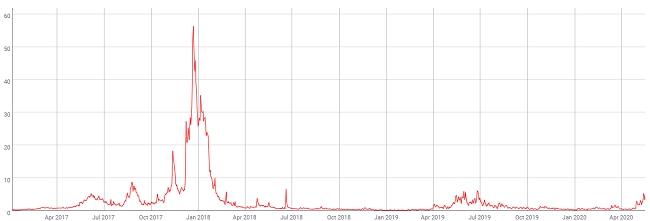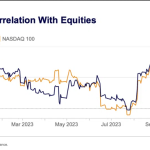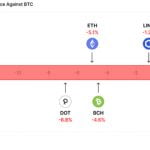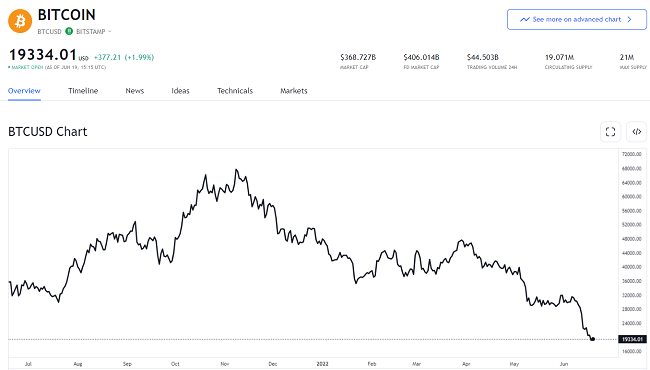Key facts:
- The hash rate reduction after halving has congested Bitcoin for the past few days.
- On Wednesday May 20 there was a -6% adjustment to the mining difficulty in Bitcoin
One of the first consequences of the third halving in the history of Bitcoin, which occurred just over a week ago, has been the reduction of the hash rate, or accumulated processing power of miners in the BTC network. With that reduction, the network has become congested and, currently, that is clearly reflected in transaction fees that have not been seen for almost a year.
Coin Metrics data shows an average transaction fee above the equivalent of $2.5 since May 12, the date of the mining reward reduction. In that period, during the last days, on Monday, May 18, there was a peak close to $6 on average, reflecting the same graph from Coin Metrics.
The same source shows that the last time that average had exceeded the equivalent of $2 was in early July 2019. And the levels of the peak this Monday were not seen since the last week of June of that same year. Specifically, on the 27th of that month there were commissions with an average of $6.1.

At the time this article was written, the average commission for a transaction to enter the next block is around 51,300 satoshis, according to bitcoinfees.earn.com. This is equivalent, at the current price of BTC, to about $4.9.
After the Bitcoin halving, the withdrawal of mining equipment with low profitability or that can no longer generate profits caused a drop in the hash rate of over 16%, as reported by several media on May 14, two days after the event.
Previously, network processing power approached record levels in the moments leading up to the halving. The latest Coin Metrics data shows just over 80 EH/s as of May 17. Although the measurements of the processing power in the short term are imprecise, various sources consulted show levels quite far from the 137 EH/s of the historical maximum.
Minor difficulty: Will it decongest the Bitcoin network?
In the new Bitcoin mining difficulty update, there was a decrease consistent with the lowest cumulative processing capacity the network currently has.
The variation with respect to the previous period is 6%, as confirmed by Alejandro de la Torre, vice president of Poolin, one of the most recognized mining groups in the Bitcoin environment. The difficulty went from 16.1T to 15.4T.
The decrease in mining difficulty should reduce commissions, currently high due to network congestion. In theory, with less difficulty, miners currently operating on the network could mine blocks and include transactions in them more quickly.
At the moment, more than 53,000 transactions are still awaiting confirmation on the Bitcoin network. The commissions of the last blocks, according to mempool.space, are still above 100 sat/byte.






